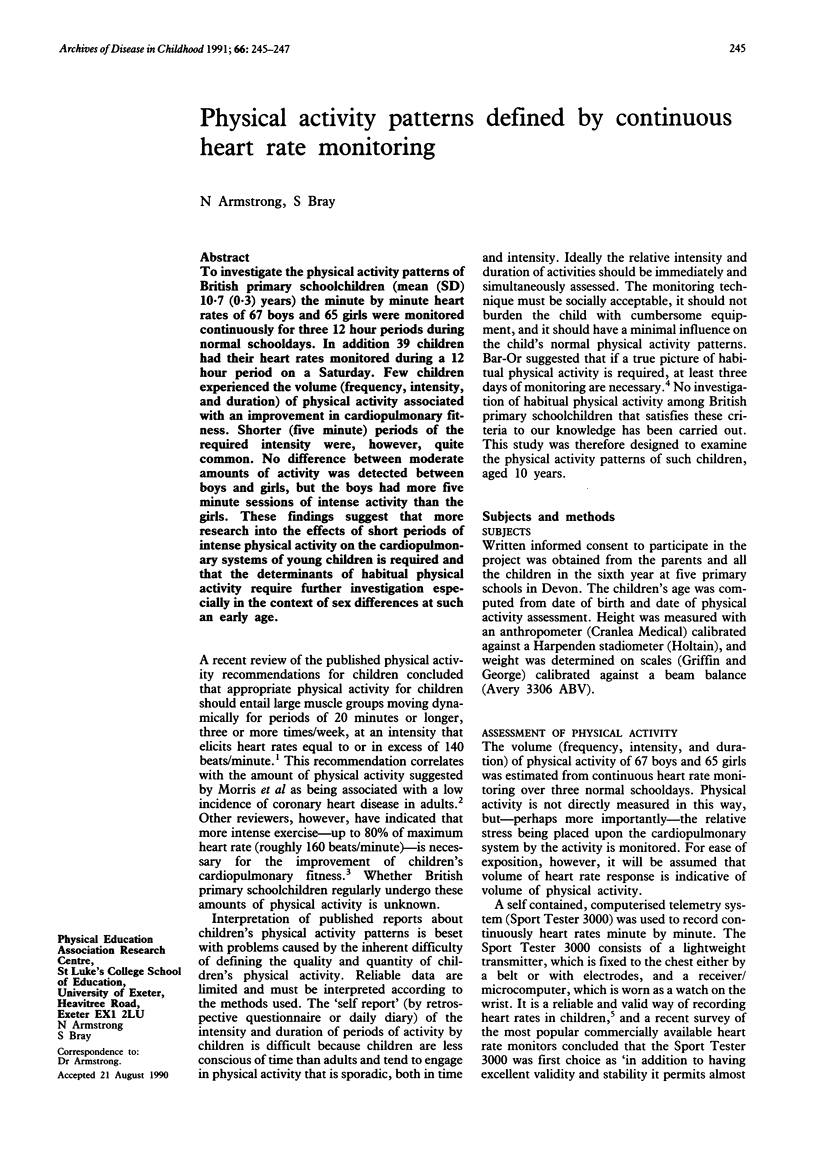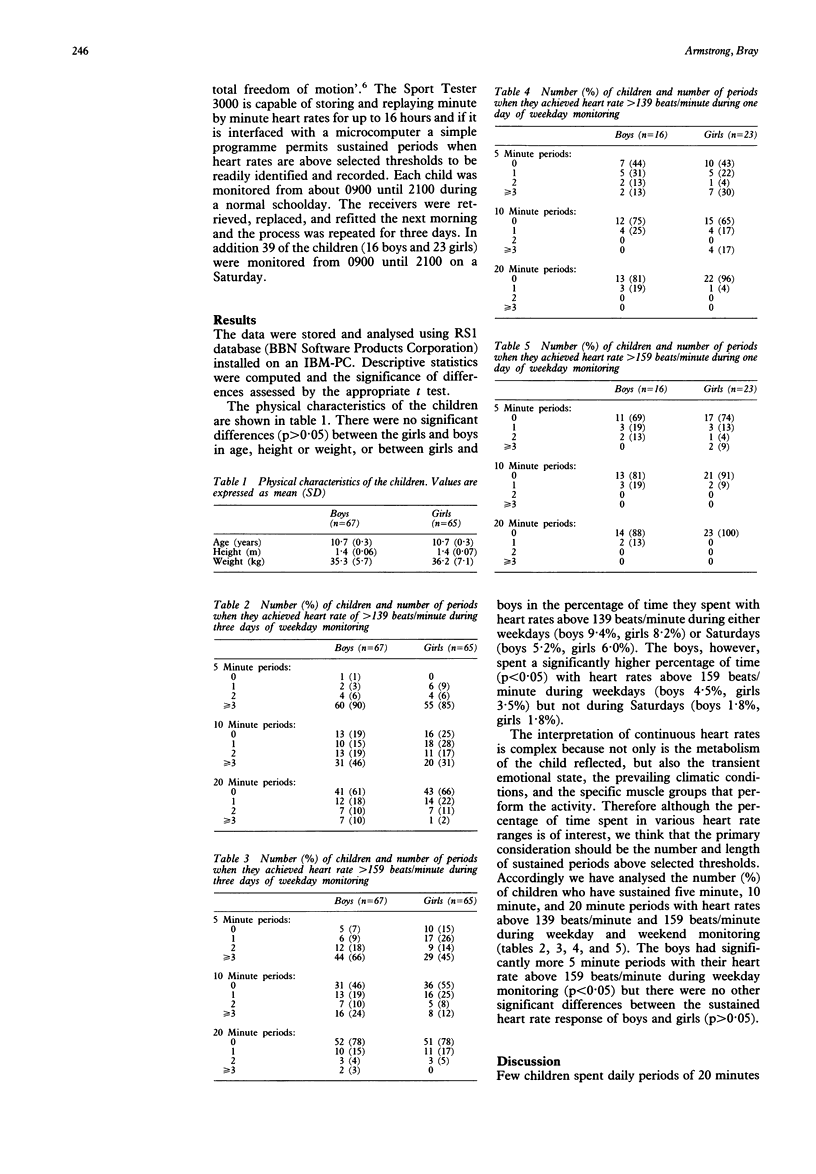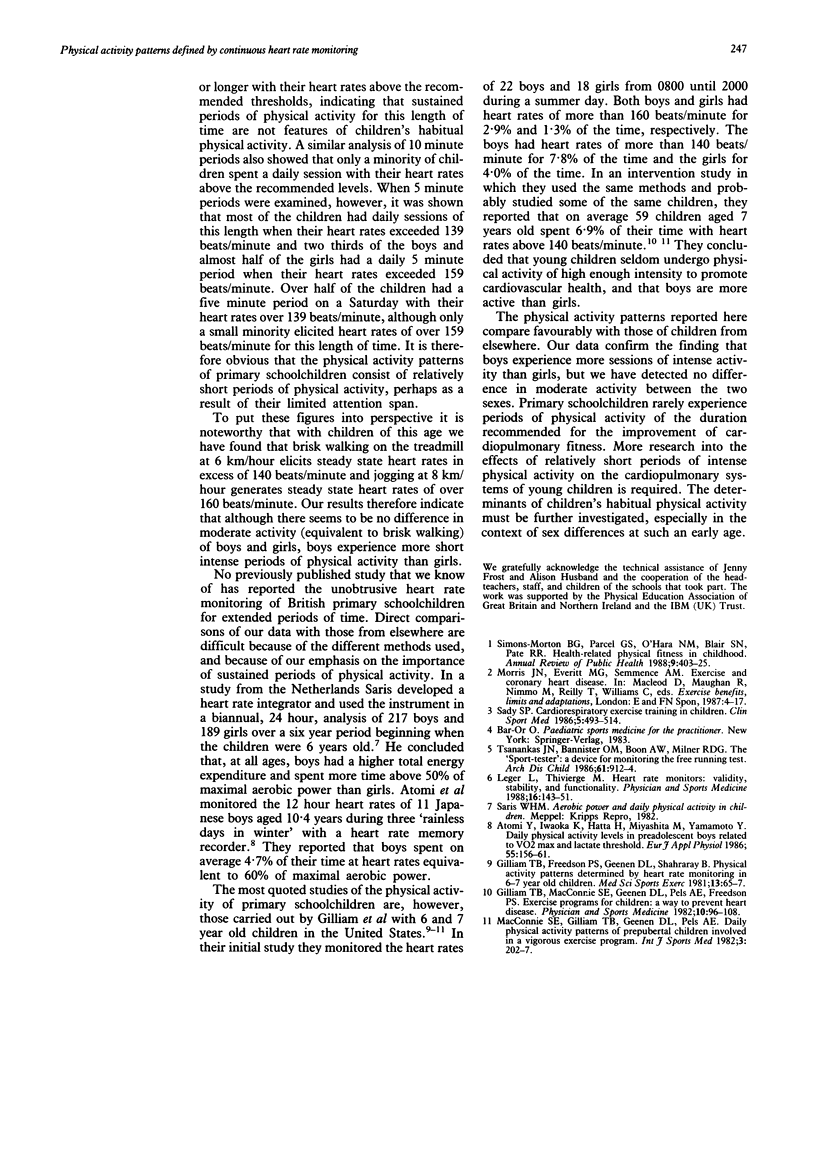Abstract
To investigate the physical activity patterns of British primary schoolchildren (mean (SD) 10.7 (0.3) years) the minute by minute heart rates of 67 boys and 65 girls were monitored continuously for three 12 hour periods during normal schooldays. In addition 39 children had their heart rates monitored during a 12 hour period on a Saturday. Few children experienced the volume (frequency, intensity, and duration) of physical activity associated with an improvement in cardiopulmonary fitness. Shorter (five minute) periods of the required intensity were, however, quite common. No difference between moderate amounts of activity was detected between boys and girls, but the boys had more five minute sessions of intense activity than the girls. These findings suggest that more research into the effects of short periods of intense physical activity on the cardiopulmonary systems of young children is required and that the determinants of habitual physical activity require further investigation especially in the context of sex differences at such an early age.
Full text
PDF


Selected References
These references are in PubMed. This may not be the complete list of references from this article.
- Atomi Y., Iwaoka K., Hatta H., Miyashita M., Yamamoto Y. Daily physical activity levels in preadolescent boys related to VO2max and lactate threshold. Eur J Appl Physiol Occup Physiol. 1986;55(2):156–161. doi: 10.1007/BF00714998. [DOI] [PubMed] [Google Scholar]
- Gilliam T. B., Freedson P. S., Geenen D. L., Shahraray B. Physical activity patterns determined by heart rate monitoring in 6-7 year-old children. Med Sci Sports Exerc. 1981;13(1):65–67. [PubMed] [Google Scholar]
- MacConnie S. E., Gilliam T. B., Geenen D. L., Pels A. E., 3rd Daily physical activity patterns of prepubertal children involved in a vigorous exercise program. Int J Sports Med. 1982 Nov;3(4):202–207. doi: 10.1055/s-2008-1026088. [DOI] [PubMed] [Google Scholar]
- Sady S. P. Cardiorespiratory exercise training in children. Clin Sports Med. 1986 Jul;5(3):493–514. [PubMed] [Google Scholar]
- Simons-Morton B. G., Parcel G. S., O'Hara N. M., Blair S. N., Pate R. R. Health-related physical fitness in childhood: status and recommendations. Annu Rev Public Health. 1988;9:403–425. doi: 10.1146/annurev.pu.09.050188.002155. [DOI] [PubMed] [Google Scholar]
- Tsanakas J. N., Bannister O. M., Boon A. W., Milner R. D. The 'Sport-tester': a device for monitoring the free running test. Arch Dis Child. 1986 Sep;61(9):912–914. doi: 10.1136/adc.61.9.912. [DOI] [PMC free article] [PubMed] [Google Scholar]


